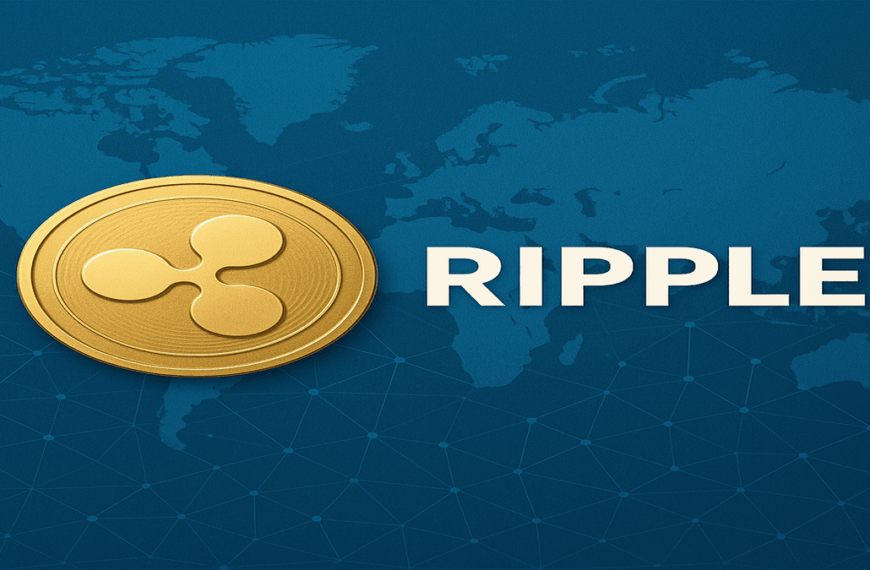[케이브릿지 미디어/Jay Son] The recent developments in Ukraine regarding the finalization of a law on Bitcoin reserve assets mark a significant moment in the evolving landscape of cryptocurrency regulation.
As the country seeks to integrate digital currencies into its financial framework, this legislation could set a precedent for other nations grappling with similar issues.
Readers will gain insights into the implications of this law for both local and international markets.
The article will explore the motivations behind Ukraine’s regulatory approach and the potential effects on investor behavior and market dynamics.
Understanding these factors is crucial for advanced crypto readers and investors looking to navigate the complexities of the current financial environment.
Ukraine’s Regulatory Framework for Cryptocurrency
Historical Context of Cryptocurrency in Ukraine
Ukraine has a rich history with cryptocurrency that dates back to the early adoption of Bitcoin in the country.
The initial enthusiasm for digital assets was met with a lack of regulatory clarity.
This uncertainty created challenges for investors and businesses seeking to engage with cryptocurrencies.
In recent years, the Ukrainian government has recognized the necessity of establishing a regulatory framework to foster growth while ensuring consumer protection.
The previous absence of regulation often led to a fragmented market with varying degrees of compliance and security.
The evolving landscape has seen the emergence of various initiatives aimed at integrating cryptocurrencies into the formal economy.
In 2021, Ukraine’s parliament passed a law that legalized cryptocurrency, providing a foundation for further regulatory developments.
This law was a significant step toward legitimizing the use of digital assets in Ukraine and addressing the concerns of stakeholders.
The current move to finalize legislation on Bitcoin reserve assets is a natural progression in this ongoing regulatory journey.
As Ukraine seeks to position itself as a leader in cryptocurrency regulation, the implications of these developments extend beyond its borders.
The country’s approach may influence neighboring nations and contribute to a broader dialogue on how to regulate digital currencies effectively.
Understanding Ukraine’s regulatory framework provides valuable insights into the global trends shaping the cryptocurrency landscape.
Key Features of the Proposed Law
The proposed law on Bitcoin reserve assets in Ukraine outlines several key features that aim to establish a clear legal framework for digital currencies.
One of the primary objectives is to define the status of Bitcoin and other cryptocurrencies as reserve assets within the financial system.
This classification could facilitate their use in various financial transactions and investment strategies.
By recognizing Bitcoin as a reserve asset, the law aims to provide a level of legitimacy that may attract institutional investors.
Another significant aspect of the proposed legislation is the establishment of regulatory oversight for cryptocurrency exchanges and service providers.
This oversight is intended to enhance transparency and security within the market.
By imposing regulatory requirements, the government aims to mitigate risks associated with fraud and money laundering.
The law would require exchanges to adhere to specific standards, thereby fostering a safer environment for users and investors.
The proposed law also addresses taxation and compliance issues related to cryptocurrency transactions.
By establishing clear guidelines for tax obligations, the government aims to create a more predictable environment for investors.
This clarity could encourage greater participation in the cryptocurrency market, as investors gain confidence in the regulatory framework.
Overall, the proposed law seeks to balance innovation with security, positioning Ukraine as a competitive player in the global cryptocurrency arena.
Implications for Domestic Investors
The finalization of the law on Bitcoin reserve assets is poised to have significant implications for domestic investors in Ukraine.
With clearer regulations in place, investors may feel more secure in their transactions and investments involving cryptocurrencies.
The recognition of Bitcoin as a reserve asset could lead to increased acceptance and use of digital currencies among local businesses and consumers.
This shift may foster a more vibrant cryptocurrency ecosystem in Ukraine, encouraging innovation and entrepreneurship.
Moreover, the regulatory clarity provided by the proposed law could attract foreign investment into the Ukrainian cryptocurrency market.
International investors often seek jurisdictions with established legal frameworks to mitigate risks associated with regulatory uncertainty.
By positioning itself as a forward-thinking nation in terms of cryptocurrency regulation, Ukraine may enhance its appeal as a destination for global investors.
This influx of capital could further stimulate the domestic market and drive technological advancements within the country.
However, it is essential for investors to remain vigilant as the regulatory landscape evolves.
The implementation of new laws may introduce compliance requirements that could impact investment strategies.
Investors should stay informed about potential changes and adapt their approaches accordingly.
Balancing the opportunities presented by regulatory clarity with the inherent risks of the cryptocurrency market will be crucial for domestic investors in Ukraine.
International Reactions and Comparisons
Global Perspectives on Cryptocurrency Regulation
The move by Ukraine to finalize a law on Bitcoin reserve assets has garnered attention from the international community.
Various countries are observing Ukraine’s regulatory approach as they grapple with their own cryptocurrency challenges.
The global cryptocurrency market is characterized by a patchwork of regulations that vary significantly across jurisdictions.
This variability often creates uncertainty for investors and businesses operating in multiple markets.
Countries such as the United States and members of the European Union have taken different paths in their regulatory approaches.
The United States has adopted a more fragmented regulatory framework, with different agencies overseeing various aspects of cryptocurrency.
In contrast, the European Union has made strides toward a more unified regulatory approach through initiatives like the Markets in Crypto-Assets Regulation.
The differences in regulatory frameworks highlight the diverse perspectives on how to balance innovation with consumer protection.
As Ukraine moves forward with its proposed law, it may serve as a case study for other nations contemplating similar regulatory measures.
The potential success or challenges faced by Ukraine could influence the decisions of policymakers worldwide.
Observers will be keen to assess how the law impacts investor confidence, market behavior, and the overall growth of the cryptocurrency sector in Ukraine.
Comparative Analysis with Other Regions
When comparing Ukraine’s regulatory developments with those of other regions, several key differences emerge.
In Asia, countries like China have taken a more restrictive stance on cryptocurrencies, implementing outright bans on trading and Initial Coin Offerings.
This approach contrasts sharply with Ukraine’s efforts to create a regulatory framework that encourages innovation while ensuring security.
The divergent strategies adopted by different countries highlight the complexities of navigating the global cryptocurrency landscape.
In North America, the regulatory environment remains dynamic, with ongoing discussions about the need for comprehensive legislation.
The United States has seen a mix of state-level regulations and federal guidance, leading to a fragmented landscape.
In this context, Ukraine’s move to establish clear regulations for Bitcoin reserve assets could be seen as a proactive step that addresses investor concerns and promotes market stability.
The European Union’s approach is characterized by a collaborative effort to develop a cohesive regulatory framework.
The MiCA regulation aims to provide clarity and consistency across member states.
Ukraine’s proposed law could complement these efforts by showcasing a practical implementation of regulatory principles.
As countries observe each other’s regulatory journeys, the potential for harmonization of standards may emerge, ultimately benefiting the global cryptocurrency market.
Potential Impact on Global Markets
The finalization of Ukraine’s law on Bitcoin reserve assets could have far-reaching implications for global cryptocurrency markets.
As more countries recognize the importance of regulatory clarity, there may be a shift in investor sentiment toward jurisdictions with established frameworks.
This trend could lead to increased capital flows into markets that prioritize transparency and security.
Investors may gravitate toward regions that demonstrate a commitment to fostering innovation while safeguarding consumer interests.
Additionally, Ukraine’s proactive approach may encourage other nations to reassess their regulatory stances.
Countries that have been hesitant to embrace cryptocurrencies may be inspired to explore regulatory frameworks that balance innovation with oversight.
This ripple effect could contribute to a more cohesive global cryptocurrency ecosystem, where investors can operate with greater confidence.
However, the impact on global markets will depend on how effectively Ukraine implements and enforces its new regulations.
The success of the proposed law will be closely monitored by investors and policymakers alike.
If Ukraine can demonstrate a thriving cryptocurrency market while maintaining regulatory integrity, it may serve as a model for other nations seeking to navigate the complexities of cryptocurrency regulation.
Challenges and Considerations
Regulatory Compliance and Enforcement
While the proposed law on Bitcoin reserve assets presents opportunities, it also introduces challenges related to regulatory compliance and enforcement.
Cryptocurrency exchanges and service providers will need to adapt to new regulatory requirements, which may necessitate significant changes to their operations.
Ensuring compliance with the law will be crucial for maintaining legitimacy and avoiding potential penalties.
The effectiveness of enforcement mechanisms will play a pivotal role in the law’s success.
Regulatory bodies must be equipped to monitor compliance and address violations effectively.
This may require the development of new tools and resources to track cryptocurrency transactions and identify potential illicit activities.
Investors will be observing how authorities manage compliance and enforcement as the law is implemented.
Furthermore, the potential for regulatory fatigue among businesses cannot be overlooked.
As companies navigate the complexities of compliance, they may face challenges in balancing regulatory obligations with operational efficiency.
Striking the right balance between oversight and fostering an innovative environment will be essential for the long-term success of Ukraine’s cryptocurrency ecosystem.
Market Volatility and Investor Sentiment
The introduction of new regulations can often lead to increased market volatility, particularly in the cryptocurrency space.
As investors digest the implications of Ukraine’s proposed law, fluctuations in market sentiment may occur.
Initial reactions to regulatory changes can be unpredictable, with investors weighing the potential benefits against perceived risks.
Market participants should remain cautious as the law is finalized and implemented.
While regulatory clarity can enhance confidence, it can also lead to short-term volatility as investors adjust their strategies.
Understanding the broader market dynamics and investor psychology will be critical for navigating this transitional period.
Additionally, the potential for regulatory arbitrage exists as investors seek to capitalize on differences in regulatory environments across jurisdictions.
As Ukraine establishes its framework, some investors may explore opportunities in other markets with varying degrees of regulation.
This behavior could impact capital flows and influence market dynamics both in Ukraine and globally.
Long-Term Implications for Innovation
The finalization of Ukraine’s law on Bitcoin reserve assets may have long-term implications for innovation in the cryptocurrency sector.
By providing a clear regulatory framework, the government aims to foster an environment conducive to technological advancements and entrepreneurship.
This supportive framework could attract startups and established companies seeking to develop innovative solutions within the cryptocurrency space.
However, the challenge lies in ensuring that regulatory measures do not stifle creativity and innovation.
Striking the right balance between oversight and fostering a dynamic ecosystem will be crucial for the long-term success of Ukraine’s cryptocurrency market.
Policymakers must remain attuned to the evolving landscape and be willing to adapt regulations as new technologies emerge.
The potential for collaboration between the government and the private sector is significant.
Engaging with industry stakeholders can lead to the development of regulations that are both effective and conducive to growth.
By fostering a collaborative approach, Ukraine may position itself as a hub for cryptocurrency innovation and development.
Conclusion
The finalization of Ukraine’s law on Bitcoin reserve assets represents a significant step in the country’s journey toward establishing a comprehensive regulatory framework for cryptocurrency.
As the nation seeks to integrate digital currencies into its financial landscape, the implications for both domestic and international markets are profound.
Investors will need to navigate the evolving regulatory environment while remaining aware of the potential opportunities and challenges that lie ahead.
The global cryptocurrency landscape is characterized by diversity in regulatory approaches, and Ukraine’s developments may serve as a reference point for other nations.
The potential for increased investor confidence, capital flows, and innovation in the cryptocurrency sector is substantial.
However, the successful implementation of the proposed law will depend on effective compliance measures and the ability to adapt to market dynamics.
As Ukraine moves forward with its regulatory initiatives, stakeholders will be closely monitoring the outcomes.
The interplay between regulation and innovation will shape the future of cryptocurrency in Ukraine and beyond.
Understanding these dynamics will be essential for advanced crypto readers and investors seeking to navigate the complexities of the digital asset landscape.








